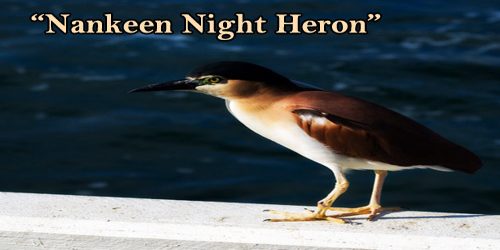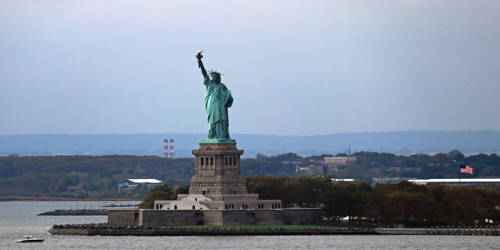The nankeen night herons (Nycticorax caledonicus) are gregarious birds. They assemble in large groups throughout the day in the canopies of trees from which, at dusk, they fly out giving occasional croaks, to drill until dawn. It is a heron belonging to the Nycticorax genus and to the Ardeidae tribe. The species breeds in colonies that sometimes consist of hundreds of pairs, with thousands supporting the largest colonies. It is also widely referred to as the rufous night heron because of its distinctive reddish-brown color. The length of the adult male is 55 to 65 cm, while the female is much smaller, measuring 55 to 60 cm. Its weight ranges between 810 g and 1014 g and its wingspan range between 95 and 105 cm. A stocky heron with rich cinnamon upperparts, white-buff underparts, a black crown, and yellow legs and feet is the Nankeen Night Heron. The head is wide, the neck short, and the legs are relatively short (giving a stooped appearance). The back of the head bears three white nuptial plumes during breeding. The bill is olive-green and dark, and the eyes are yellow. The sexes of the nankeen night heron are identical in appearance, apart from females being smaller in most measurements. The young birds are white, brown, and orange-brown, heavily striped, and streaked. The adult’s black cap grows first as they mature, with the body plumage remaining streaked for some time.

(Nankeen Night Heron)
Nankeen Night Herons have a Catholic diet; they eat fish, a variety of small vertebrates (amphibians), other birds’ chicks and eggs, small mammals such as mice, crustaceans, especially aquatic insects of various kinds of arthropods, and human garbage. The Nankeen Night Heron is found along shallow river banks, mangroves, floodplains, swamps, and parks and gardens and is frequented by well-vegetated wetlands. There are also usually two or three small, white plumes from the crown in a downward direction to the neck during the breeding season. When freshly grown, these are tipped with black. Using passive strategies such as standing and walking slowly, they prefer to forage alone but are often more aggressive, first diving, and catching prey by foot. By vibrating their bills in the water, swimming, or attracting prey. Their nests are made of leaf-lined sticks. With a clutch of 2-3 green-blue eggs, they are usually single-brooded. The average egg size is 51.50 mm in length and 37.20 mm in width. Usually, incubation lasts 21 days, and both parents help incubate young people and care for them. Nankeen night herons are widely distributed and are present in the Federated States of Micronesia, Australia, New Zealand, the Philippines, Papua New Guinea, the Solomon Islands, Java, New Caledonia, Palau, and the Caroline Islands. They are native to Australia and are prevalent in most states of the nation, with the exception of the west, where they are rare or absent. On the Adelaide Plains, along the Murray River and around the lower lakes, they are moderately abundant in suitable habitats but are scarce elsewhere in South Australia. They are typically sedentary, but they may travel inside the Murray-Darling basin in compliance with the local water source, for example. The nankeen night heron has a stable population size and the International Union for Conservation of Nature (IUCN) classifies it as a species of least concern.
















